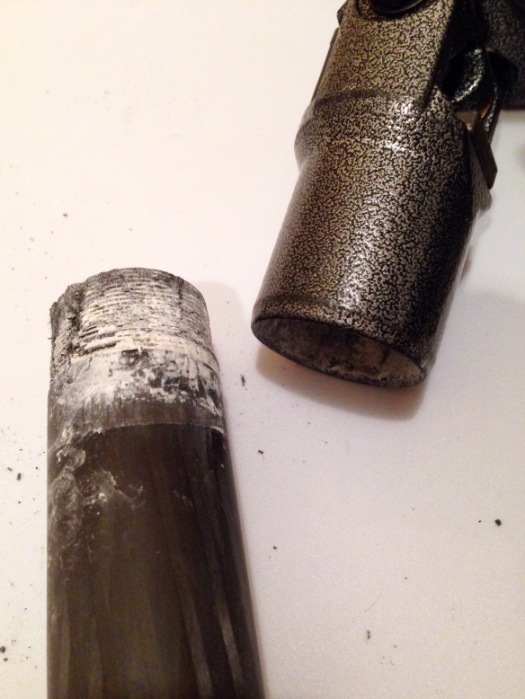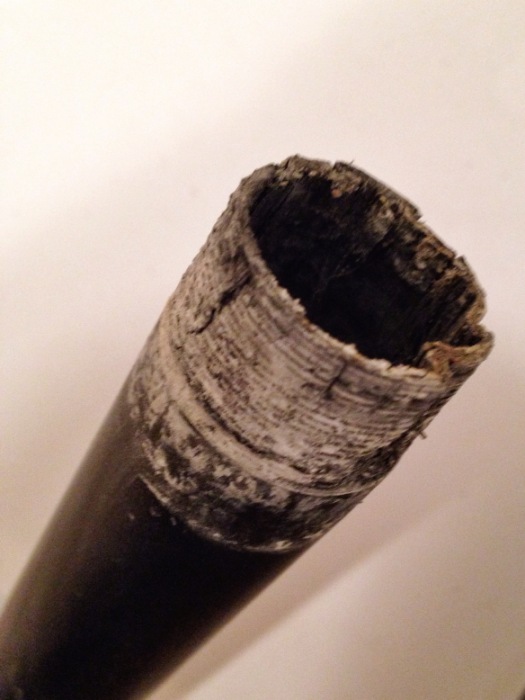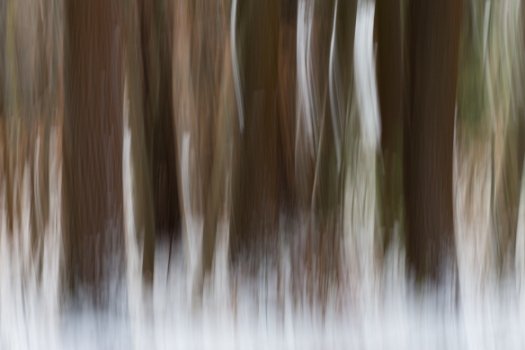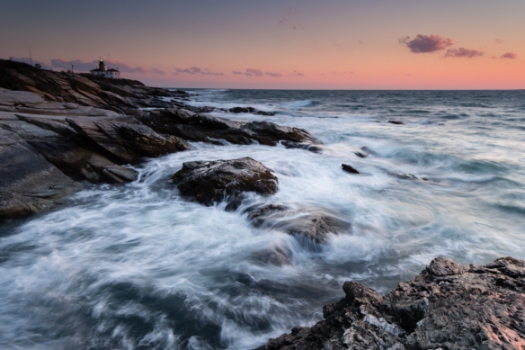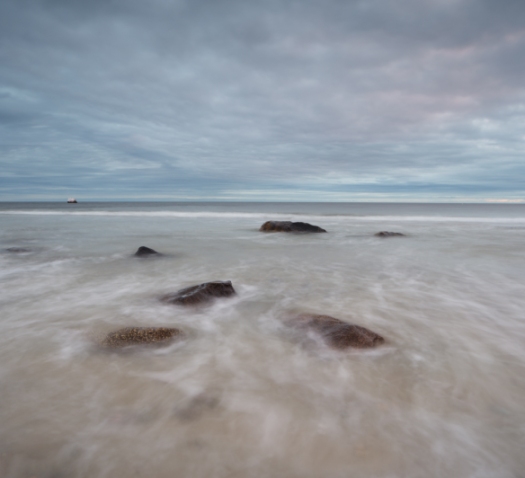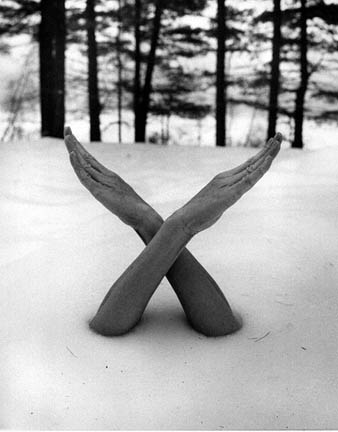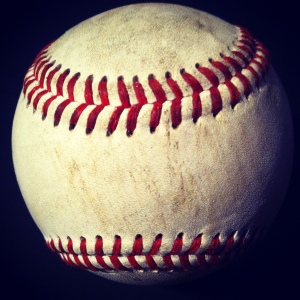We’ve been having an odd winter here in New England – lots of snow over a very short period of time. We’ve had about 80 inches (or ~ 2 m) of snow in the last 20 days with more coming down as I write this. During the last storm I made the misguided decision to head out to photograph in the nearby woods. Misguided because the visibility was poor and the snow plows were not managing to keep up with the snow which made driving interesting. Once at the woods the snow was quite deep even on the normally well trodden paths which made for slow going.
Increasingly I will explore ideas with my iPhone before pursuing them further with my DSLR. A couple of the images from my iPhone are above, I was at least thigh deep in the snow in this part of the woods. As I maneuvered my tripod around in the deep snow I heard a funny creaking noise. At first I thought that was the wind blowing the trees, but there wasn’t any wind. Then I thought it must be someone else out and about, but I could see anyone. Very weird. I picked my tripod up out of the snow to get it into a better position and and two of the tree legs came up, the third stayed in the snow. It had come detached where it joined the metal frame. That was pretty much the end of my photography for the day.
I’m not sure if you can tell from the images above but the carbon fiber leg where it joined the frame had delaminated and was soft. It was also crinkled which explained why the tripod leg did not fully close – there was always just a tiny fraction of leg extended. The metal also looks like it is badly corroded. While I may send this old tripod back to Gitzo I’m not holding my breath that they would be able to help me out.
I do have a new tripod that I’ve been using as a travel tripod – a Really Right Stuff 24L. I may now supplement this with the 34L, a beefier version of the 24L. The 24L to me seems a bit weedy, the lower sections of the legs are particularly thin and make me wonder how solid the tripod can really be. I guess time will tell.



